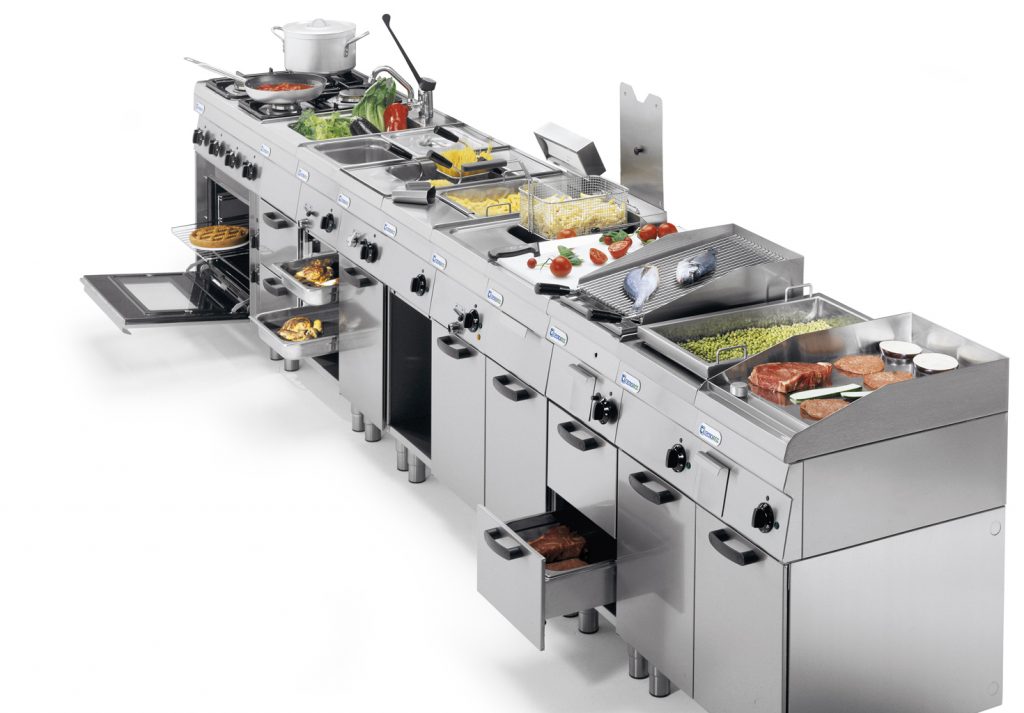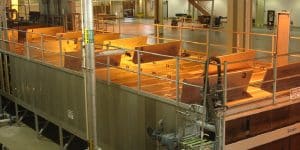Not surprisingly, some of the most common problems associated with food grade equipment are traced directly back to poor design and/or not selecting the best size or model of equipment for the type or quantity of product you’re working with.
A quick review of Food Safety Magazine, and its coverage of the issues surrounding poor-quality equipment, poor sanitation, maintenance and worker use, is enough to make any owner or manager think twice about skimping on food equipment design, purchase or replacement.
Wherever there is poor design or low-quality materials, there exists the possibility of food contamination, employee safety hazards and/or lesser-quality products. Overall efficiency of both food grade equipment as well as production speed and consistency is also at risk when you sacrifice quality for budget.
Four Common Problems that Compromise Food Grade Equipment
As we mentioned above, design plays a significant role in both the efficacy of equipment as well as the frequency of related malfunctions, hazards, or production challenges.
Pay attention to the following when purchasing, replacing, or upgrading current equipment. Investing in the best equipment for your workplace may cost more at the outset but it will make that up and then some in terms of lowering lifetime costs – equaling higher lifetime savings for your company.
Here are 4 of the most common problems with food grade equipment:
1. Failure to uphold best design tenets for food grade equipment
Wherever you are working with food, contaminants are a serious risk. Any potential disease or illness outbreak connecting back to product manufacturing or disbursement leads to serious lawsuits, financial penalties and an immediate collapse of your brand’s reputation.
Some of the basic tenets of best food grade equipment design include:
- Smooth, non-porous surfaces so they are easy to clean and less apt to trap food, bacteria, mold and other contaminants.
- All parts and areas of equipment should be easily accessible for cleaning and maintenance.
- Permanently joined surfaces should have angles that are less than 135° should have an internal radius of less than 1/4-inch (6 mm).
- Surface materials should be non-corrosive and non-absorbent.
- Should never involve the use of lead or lead solder.
- Only work with manufacturers that guarantee these and other best design practices.
2. Using lower quality steel products and/or replacement parts made from lower-quality steel than the rest of the equipment
Steel is the staple “ingredient” used to construct the lion’s share of food and beverage equipment. It’s affordable, durable, and easy to clean. That being said, not all steel is created equal.
Low-quality steel is difficult to clean and is typically made from an amalgam of lesser quality metals and minerals, which make it more susceptible to corrosion. Parts will wear down and break more often and quality of product is more difficult to control.
High-quality steel lasts longer, performs better, prevents corrosion, and streamlines cleaning and sanitation procedures – all of which improve your company’s bottom line.
3. Low-quality welding
The difference between joints and attachments welded by a craftsman and those by anything less are visibly discernible. They have ridges, crevices, imperfections, and weak points that lead to contamination, corrosion, and product failure – particularly because low-quality welding can’t withstand repeated exposure to high temperatures without eventually falling apart.
All welds performed on commercial food and beverage parts and equipment should be of the highest-quality so they support and uphold the integrity of the equipment rather than detract from it.
4. Mismatched parts (or materials) that don’t fit together as they should
This is especially common along extended assembly lines or when companies need a non-standard piece of equipment but make do with what they have. While a mechanical mind is to be celebrated, mixing and matching parts and equipment is a dangerous habit.
First, food grade equipment manufacturers are clear that equipment/parts are to be used as directed and not any other way. Mixing-and-matching parts is hazardous and will void all warranties as well as any responsibility the manufacturer would have should an equipment-related failure or injury take place. Secondly, mixing metals is a recipe for problems. Copper, brass, monel, and other copper alloys are susceptible to corrosion from the presence of fats. Different metals create toxic byproducts when joined together, leading to corrosion and product contamination, certain metals should never be used in food grade equipment, and so on.
What Should You Do?
Instead, find a food and beverage manufacturing company known for custom-designed equipment and/or parts so equipment remains hygienic, safe, easy-to-clean/maintain and comes with a legitimate warranty.
Are you looking for a manufacturer who produces the highest-quality food grade equipment, including conveyor belts, steel tanks, pasteurizers and more? Contact Smart Machine Technologies.
We’ll work with you to find standard or custom-designed equipment that suits your company’s unique needs. We also provide all the information required to adequately train your employees to ensure it is cleaned and maintained regularly and with ease.







 Contract
Contract Food & Bev
Food & Bev